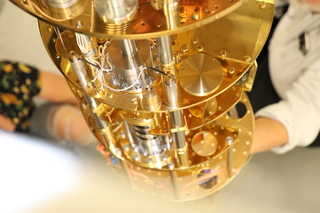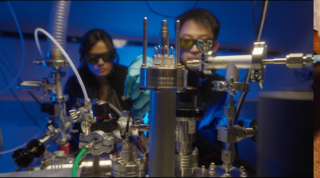Current Position: Postdoctoral Researcher
Current Institution: Lawrence Livermore National Laboratory
Thesis Title: “Harnessing HAYSTAC for Hidden Photons and Advancing Rydberg Atom-based Axion Detection”
Thesis Abstract: Dark matter is the name that we give to the 85% of matter in the universe that interacts via gravity but negligibly with any of the other known forces. One compelling model for dark matter is the axion, as it simultaneously solves the existence of dark matter and the strong CP problem in QCD. Axions can interact with a strong magnetic field through the Primakoff effect, wherein the axion can spontaneously convert into a photon in the presence of a strong magnetic field. The traditional experiment used for this purpose is called a haloscope, which consists of the aforementioned strong magnetic field, a microwave cavity to resonantly enhance the converted photon, and a low-noise amplifier to enhance the inevitably tiny signal.
I discuss two large projects in my thesis work relevant to the development and progress of haloscopes. The first project is to expand the data analysis of HAYSTAC, a haloscope that has been used to search for axions in the mass range of 17-24 μeV, to search for another dark matter candidate called the hidden photon, which would be detected from a local relic abundance by probing for a power excess caused by the hidden photon’s kinetic mixing with Standard Model photons. Haloscope axion exclusion limits may therefore be converted into competitive hidden photon parameter limits via the calculation of a corresponding hidden photon to photon coupling factor.
The second project is the development of RAY (Rydberg atoms for Axions at Yale), a single photon detector that can be integrated into a standard haloscope. A major challenge of axion searches at higher masses is that the time required becomes increasingly long because of lower signal and increased quantum noise when using a standard haloscope. Eliminating this quantum noise can be accomplished with single photon counting. We choose to use Rydberg atoms, which are atoms at very high energy states, for this purpose. Using a beam of Rydberg atoms to detect the photons generated through the Primakoff effect would render the axion search at higher masses (> 50 μeV) tractable. Both of these research efforts will expand the capabilities of haloscopes as detectors for wavelike dark matter.


